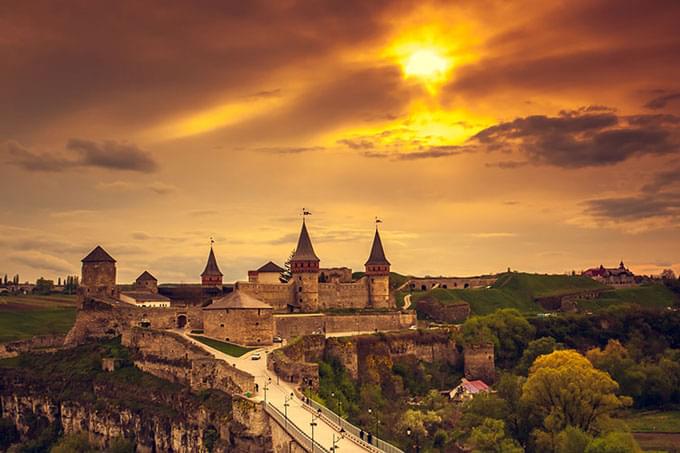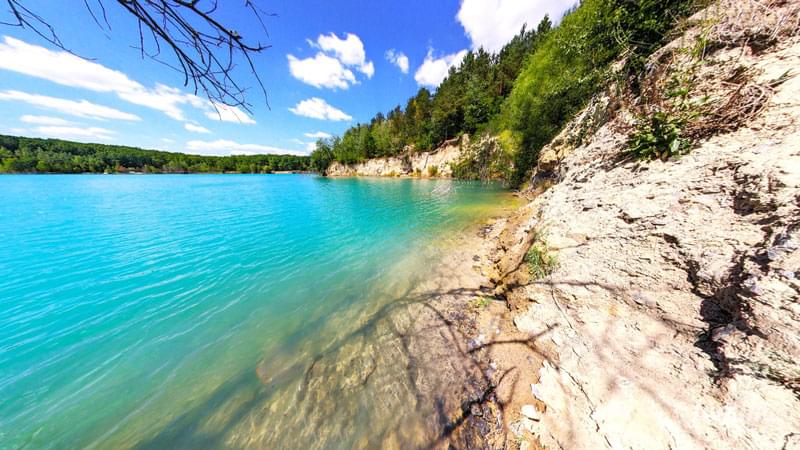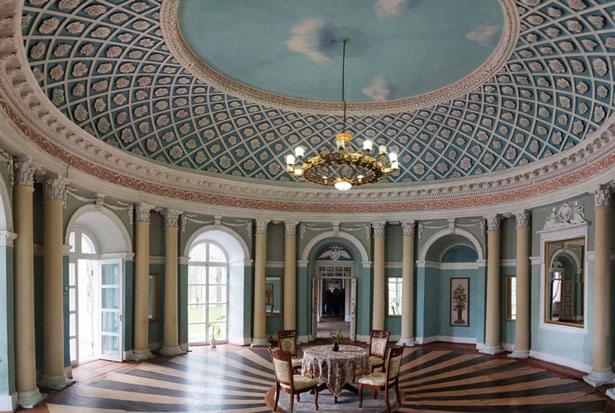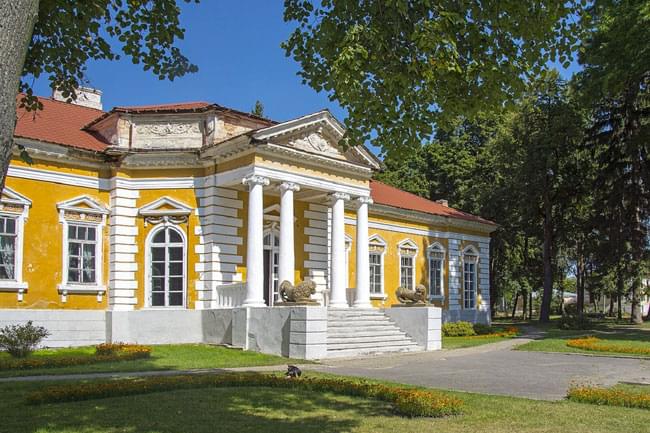
PODILLYA
Historical region in the central-western part of Ukraine, occupying the basin of the interfluve of the Southern Bug and the left tributaries of the Dniester. Podillja combines picturesque natural and historical monuments. These are the Kamyanets-Podilskaya fortress among the Smotrytsky canyon, the flooded village of Bakota, as well as the peninsular city of Zalishchiki in the bowl of the canyon on the Dnistro. The region has an extensive railway infrastructure. The narrow-gauge railway Gaivoron - Rudnitsa, 78 kilometers long, passes through this territory.
Historical region in the central-western part of Ukraine, occupying the basin of the interfluve of the Southern Bug and the left tributaries of the Dniester. Podillja combines picturesque natural and historical monuments. These are the Kamyanets-Podilskaya fortress among the Smotrytsky canyon, the flooded village of Bakota, as well as the peninsular city of Zalishchiki in the bowl of the canyon on the Dnistro. The region has an extensive railway infrastructure. The narrow-gauge railway Gaivoron - Rudnitsa, 78 kilometers long, passes through this territory.

.jpg)

Podolsk Tovtry
Tovtry is the local name of a rocky arched ridge, the height of which within the National Nature Park reaches an average of 400 meters above sea level. Above the surrounding plain, this ridge rises by 60-65 m. Podolsk Tovtry is noted for its geological structure, rare and uncharacteristic of the plain-platform areas. In this sense, they are a collection of fossil reef structures of the barrier coast, formed in shallow seas.
The main possible types of tourist activity: hiking, water, car, horse, ski, cognitive and cultural (excursions, etc.); general health recreation (hiking, sports games, skiing), excursions (on the Dniester reservoir excursions are carried out on motor ships), delta-, paragliding, balloon trips, amateur crafts (mushroom and berry picking, fishing, hunting); climatic and balneological treatment.
Cherepashinsky quarry
In the Kalinovsky district, not far from Vinnitsa, a unique Cherepashinsky quarry is hidden. It is compared to the landscapes of Mallorca or other tropical islands - all thanks to the purest water and beautiful landscapes. However, these Ukrainian tropics are much closer than Mallorca or Bali - the quarry is located near the village of Cherepashyntsi, which has existed since the 15th century. Previously, there was a marsh area where many turtles lived. Hence the name of the village.



Samchyky Palace
The Samchyky Palace and Park Ensemble is one of the most brilliant works of architecture and garden and park art in Ukraine. This unique pearl of the Podolsk region is characterized by architectural richness and the work of human hands. It is important that the buildings here have survived as they were at the end of the eighteenth and early nineteenth centuries.
The center of the ensemble is a palace with white stone columns of porticos, exquisite ceremonial interiors. It is located in the southern part of the estate. The empire is built in a strict and solemn style and is characterized by a clear symmetrical-axial composition, geometrically expressive and comfortable layout. The palace is one-storey with semi-basements. The park facade with a six-columned portico of the Ionic order is decorated solemnly. On the pediment there is an oval frame made of a laurel wreath, topped with a count's crown (in the time of the Chechels there was a family coat of arms). Both sides are carvings of seated goddesses: agriculture and prosperity of Demeter-Ceres with a horn of plenty and a pear in her hand and love and beauty of Venus-Aphrodite with a wreath in her hand over her head. The fields of the portico ceiling are covered with stucco in the form of plant branches with flowers and vases in the center.
The rooms of the main facade of the palace were intended for housing, and the southern park, extremely beautiful, richly decorated, acquired a ceremonial significance. The most beautiful is the Round large living room with a domed blue ceiling, which opens with a white braid and rosettes, and in the upper ceiling - the sky with clouds. Elements of decoration are cornices in the form of a stucco frieze from a vegetative ornament. The ceiling is based on eight pairs of columns of a magnificent Corinthian order, polished under ivory. The walls are decorated with garlands of flowers and fruits, stucco images of eagles. The color of the walls is sustained in blue-green tones.